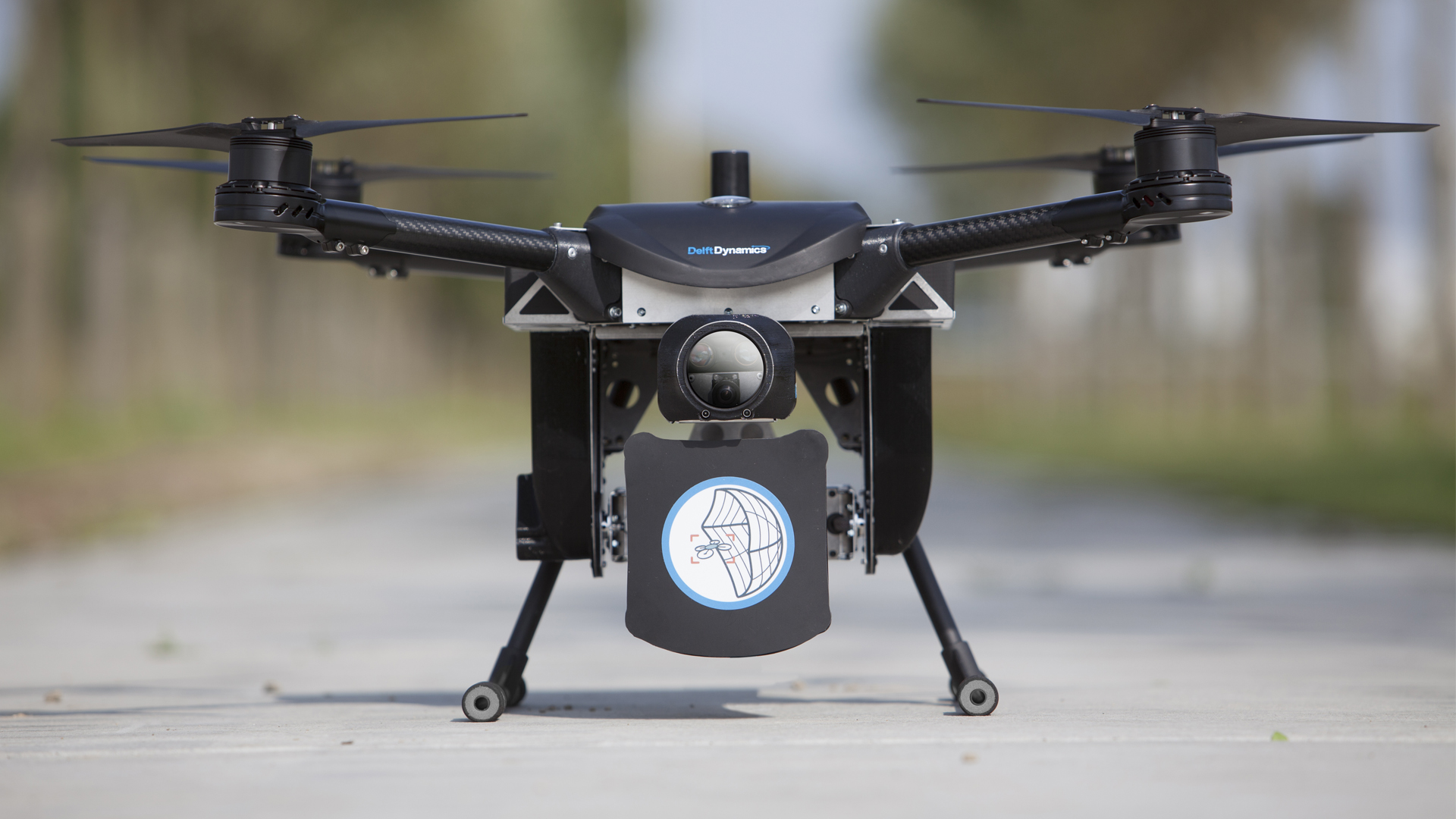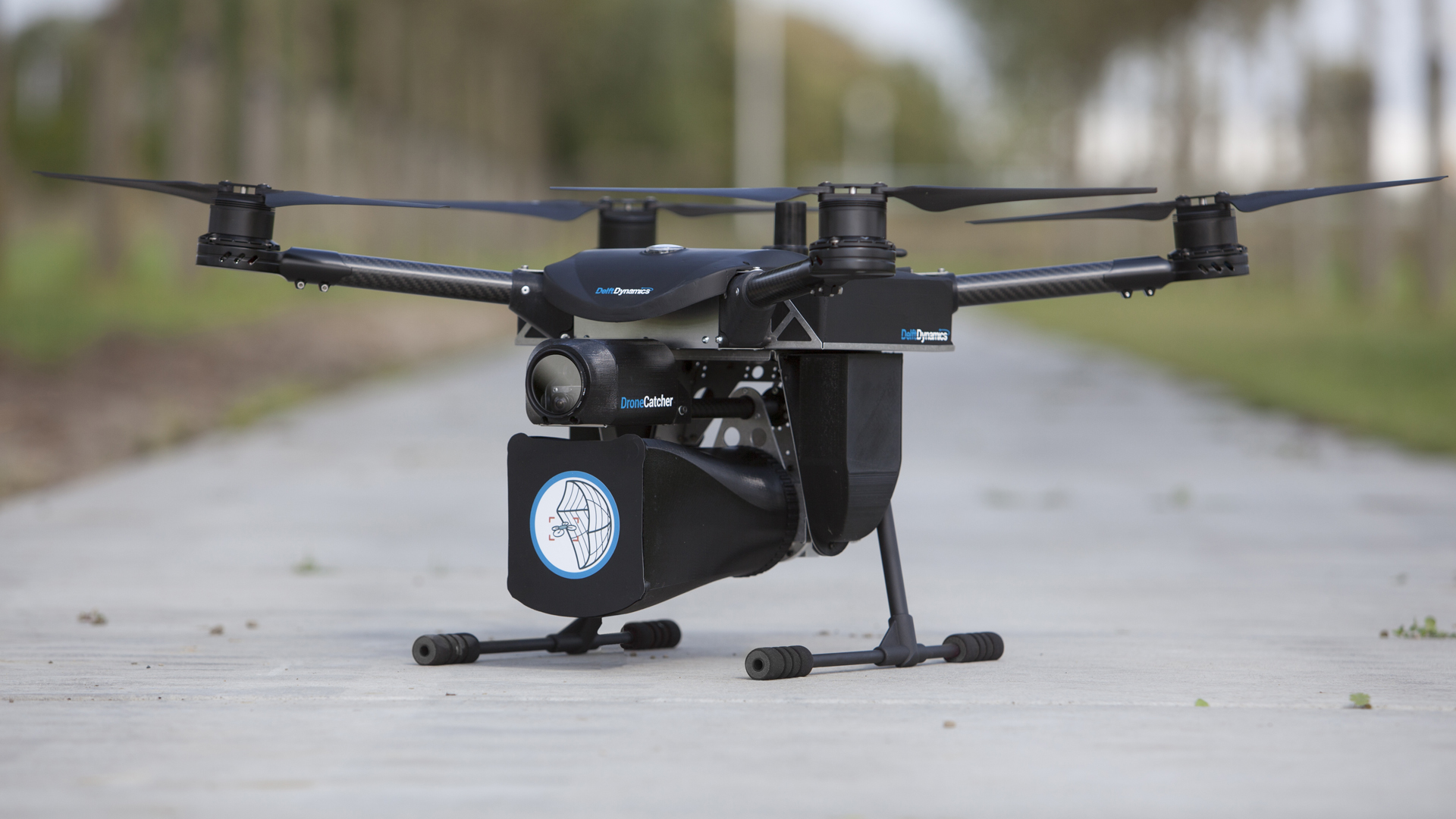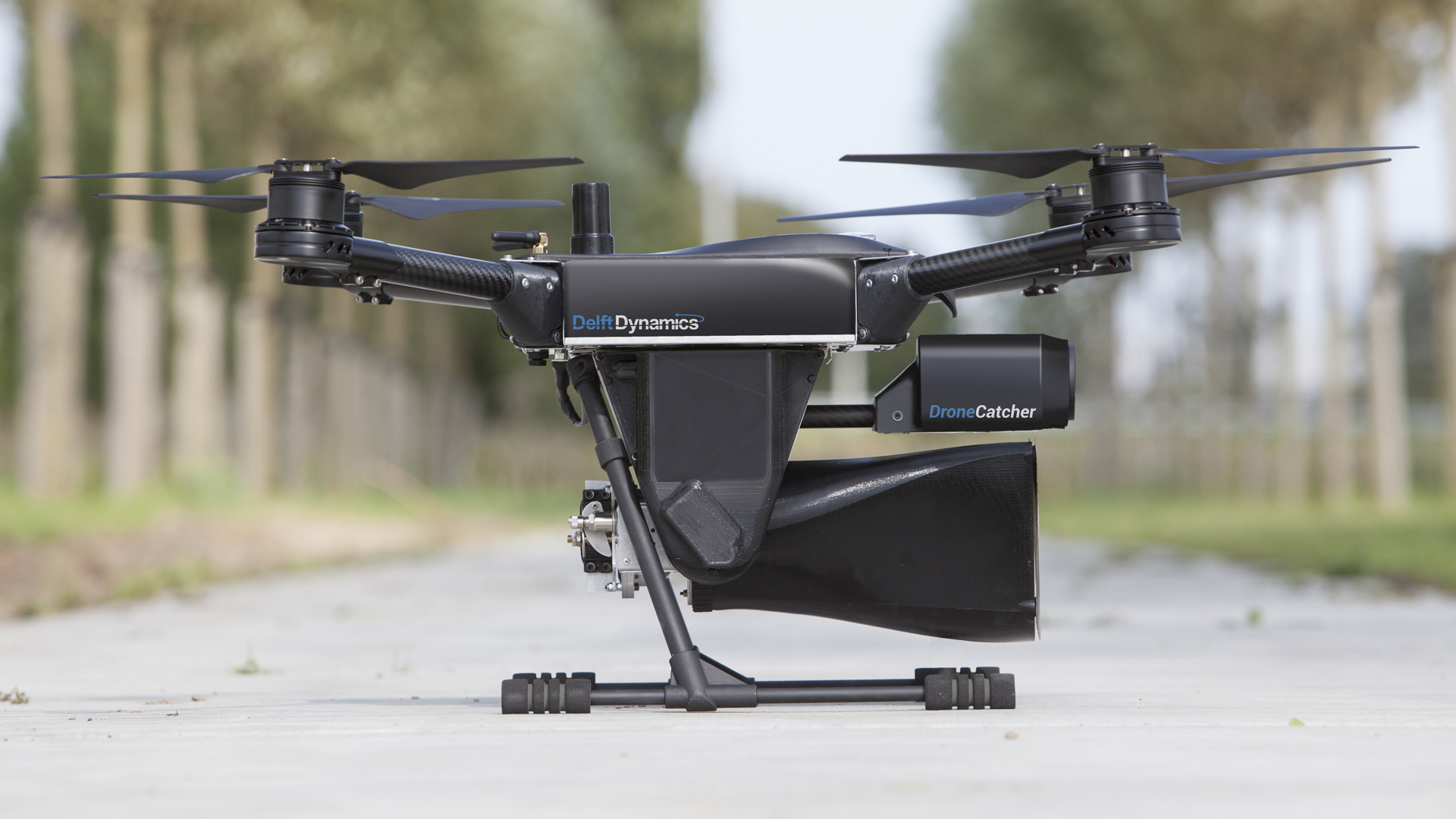The popularity of hobby drones has led to an uptick in flights in restricted areas such as airports, prisons, and even government facilities.
It’s a headache for those responsible for the security of such places, though a growing number of startups have been developing technology aimed at keeping these locations free from the unauthorized flight incursions.
Dutch firm Delft Dynamics, for example, has been working on its DroneCatcher quadcopter for several years, launching its first model in 2017.
The machine uses radar, vision, and acoustic sensors to detect a rogue copter in the air. Once its trackers have locked on to the aircraft, the DroneCatcher operator can shoot a net from up to 20 meters away to disable it. Capturing it this way prevents the drone from crashing to the ground where vital evidence could be lost, and instead enables the DroneCatcher to bring the machine back to base in one piece.
The team has recently updated DroneCatcher, as per New Atlas, adding a power-giving cord from the ground so the machine can stay hovering pretty much around the clock.
At a place like an airport where even the shortest flight disruption can cost large amounts of money, every second counts — you only have to see how a single drone incursion at London’s busy Gatwick Airport last year caused untold chaos as multiple flights had to be diverted.
With the tethered DroneCatcher already fully powered and in the air, the machine can be guided toward its target the moment it’s identified. As it does so, the power cord automatically disconnects from the quadcopter so it can fly as far as it needs to before tackling the rogue drone.

Once the DroneCatcher begins flying sans cord, it can stay in the air for up to 30 minutes, which should be ample time for it to take down its prey.
There are plenty of different ways for airport and prison operators to tackle unauthorized drone flights. So far we’ve seen everything from bazooka-like bad boys and anti-drone “death rays” to drone shields and highly trained birds of prey.
Delft Dynamics‘ DroneCatcher isn’t the first drone we’ve seen that uses a net to capture illegally flown drones. Back in 2015, Japanese police unveiled a slightly different design that uses an open net dangling beneath it. Rather than shoot it at its target, this particular contraption has to chase down the rogue drone to ensnare it in the net. Though the system may seem rather crude, it looks effective enough in the demonstration video. But it clearly needs a skilled pilot to make the catch.





